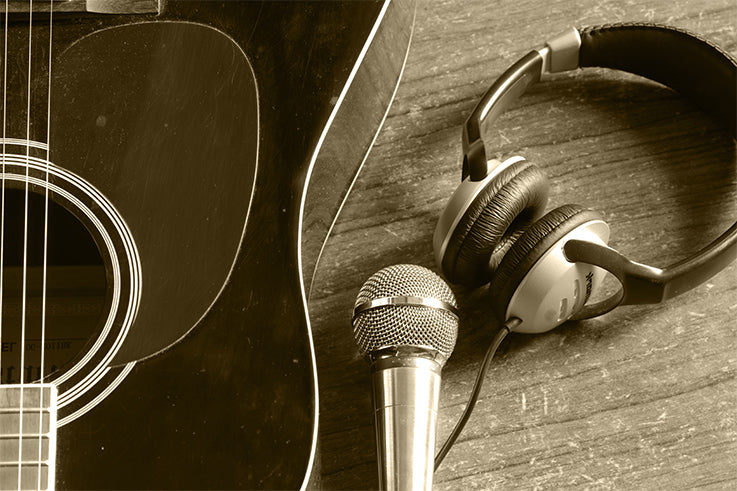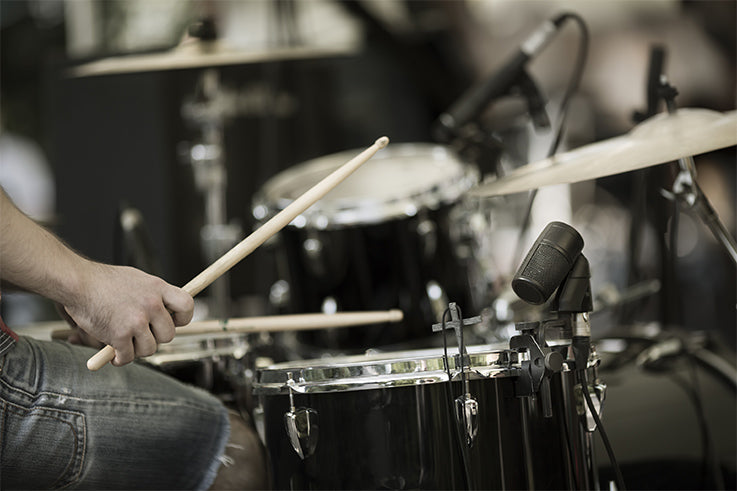-
Audio
-
Guitar
-
Bass
-
Blog
-
SALE
- Financing
- Support
- SINCE 1946
November 05, 2015
Purchasing the right microphone for your needs is not a simple task. Mics come in a variety of shapes and technologies, each suited for a particular purpose. There are also mics on the market, which can be used for a wide range of applications, but you still need to ensure they fit the bill for your specific situation. Two important factors when selecting a mic are the type of environment and the equipment with which the mic will be used.
Polar Pattern
An important mic feature is its polar pattern, i.e. the direction from where the mic recognizes or overlooks incoming sounds. The most common type of pattern is unidirectional. This is when the microphone generally only accepts sound input coming in from one direction. Within unidirectional microphones, there is a further classification of polar patterns known as cardioid, supercardioid and hypercardoid. The accompanying explanation helps detail how each type of microphone accepts sound. All three types are sensitive to sound coming straight on or from the sides and ignores any sound behind (or at an 180o angle) the direction in which the mic is facing.
A multi-pattern microphone is one in which you can change the polar pattern, giving your microphone added versatility. A vocalist on stage would be better off with a supercardioid, as it is the narrowest of the three types and will eliminate ambient sounds. Guitar and bass amps are best matched with a cardioid polar pattern to isolate their sound and control feedback.
Frequency Response
The range of frequencies a microphone will pick up is referred to as frequency response. This is usually stated in the form of low to high frequencies the mic will catch. For instance, the M67 Unidirectional Instrument Microphone by Carvin Audio comes with a frequency response of 45 Hz to 15 kHz. A vocal microphone would have a range from 80 Hz to 15 kHz. The frequencies a mic can capture would have to be lower for toms and snares, starting around 40 Hz. An even lower starting frequency of 20 Hz would be needed for a bass drum.

Curves
Every mic has its own character, which you will discover as you gain experience with your mic, but the chief feature of a microphone’s character is its frequency response curve. The simple frequency response tells us the frequencies a mic can capture, but the frequency response curve tells us how well the mic responds at the various frequencies. Since the response starts below zero dB, rising and returning to below zero levels, the shape looks like a curve on a chart. The crests and valleys in the curve are what shapes a mic’s character and tells us in which situation the mic is at its optimum performance. For instance, a good vocal mic will shoot up in its higher mid-range, delivering to the audience a more intelligible and smoother voice.
SPL
Sound level pressure (SPL) is how the frequency response curve is measured and created. A frequency is put out by a known measured speaker and the output of the microphone is measured. This is done from 20Hz to 20kHz and then plotted. There is a second part to the SPL measurement that also tests the highest amount of pressure a microphone can handle or volume a microphone can accept and reproduce without distortion. This feature, known as the maximum pressure level, is vital for loud instruments like drums. SPL is measured in terms of decibels and a high level is around 130 dB.
Sensitivity
Sensitivity is a measurement based on a standard test to give a reference between mics. To get technical for a minute, the mic output is measured in volts with a 1kHz sine wave output at a sound pressure level of 94dB SPL. This 94dB signal is moving the mic’s diaphragm and creating a voltage at the output of the mic. Why 94dB SPL? Well, that is 1 Pascal, but that probably does not help you. It’s a standardized test to have all microphones on the same page. Let’s get out of the technical stuff. The thing here to understand is this is a measurement best used to compare similar microphones. The specification will be in millivolts (mV)/pascal (Pa). The higher the voltage per pascal, the more sensitive the microphone. It can also be in dBV/pascal or shown in dBV with a reference to -34dB at 1 pascal. Here in dB the higher the dBV number the higher the sensitivity. A very high sensitivity mic will pickup up everything in the room or create feedback very easily. Live mics are typically not as sensitive as studio mics because of these reasons.

Drum Kit Mics
If you are in the market for drum kit mics, you will find packs of drum mics, which include four or more mics. These sets come with various mics tailored to the instruments in a drum kit, as instruments like a cymbal or a drum generate sounds with their own peculiarities. For instance, a drum kit mic package will likely include a small diameter condenser mic to reproduce the waves emitted from cymbals. These sets are useful for drum kit players, as the different mics provided in the set will permit you to capture the different sounds you will be producing.
When out shopping for a mic, remember a higher price tag will not land you the best mic. Numerous microphone manufacturers have been able to reproduce the technology used in high-priced models and provide you with less expensive options. You may save some money by checking out the specs of a microphone and not giving too much weight to a brand name. Caution is also needed to not blindly trust the specs the manufacturer has listed. Try out the mic and ensure it sounds right to you for the purpose you want to use it for.
October 02, 2025
Discover the features and performance that the WG6 Wireless Guitar/Bass System has to offer. The WG6 Wireless Guitar/Bass System is designed to give you the wireless freedom you have been looking for and the simplicity to make your life as a working musician easier. Advanced wireless technology, multiple channel capability, premium audio processors make the WG6 the leader in compact wireless instrument systems. Defined and detailed low frequency response makes this system especially useful for bass players. The WG6 works with both active and passive instruments and is perfect for both electric and acoustic guitar/bass.
March 28, 2025
At any time at any gig, something is bound to go wrong and you may need a tool to get you back up and running. Here are a few basic tools you should bring to every gig.
January 09, 2025
I once asked blues legend Walter Trout why he still plays his well-worn vintage Strat. The technology exists to digitally scan the guitar and make very accurate replicas. His response was he could leave it at home, but then it will never be played. Plus, someone could steal it from his home. At least the guitar is with him and he has the pleasure of playing it. But this may not be the same for everyone.
Sign up to get the latest on sales, new releases and more…
NoFraud Frequently Asked Questions
"Make a joyful noise unto the Lord all of the earth; make a loud noise and rejoice and sing praises. Sing to the Lord with the harp and the voice of the psalm." - Psalm 98:4-5
© 2025 Carvin Audio.
Carvin Corp.
POS and Ecommerce by Shopify
